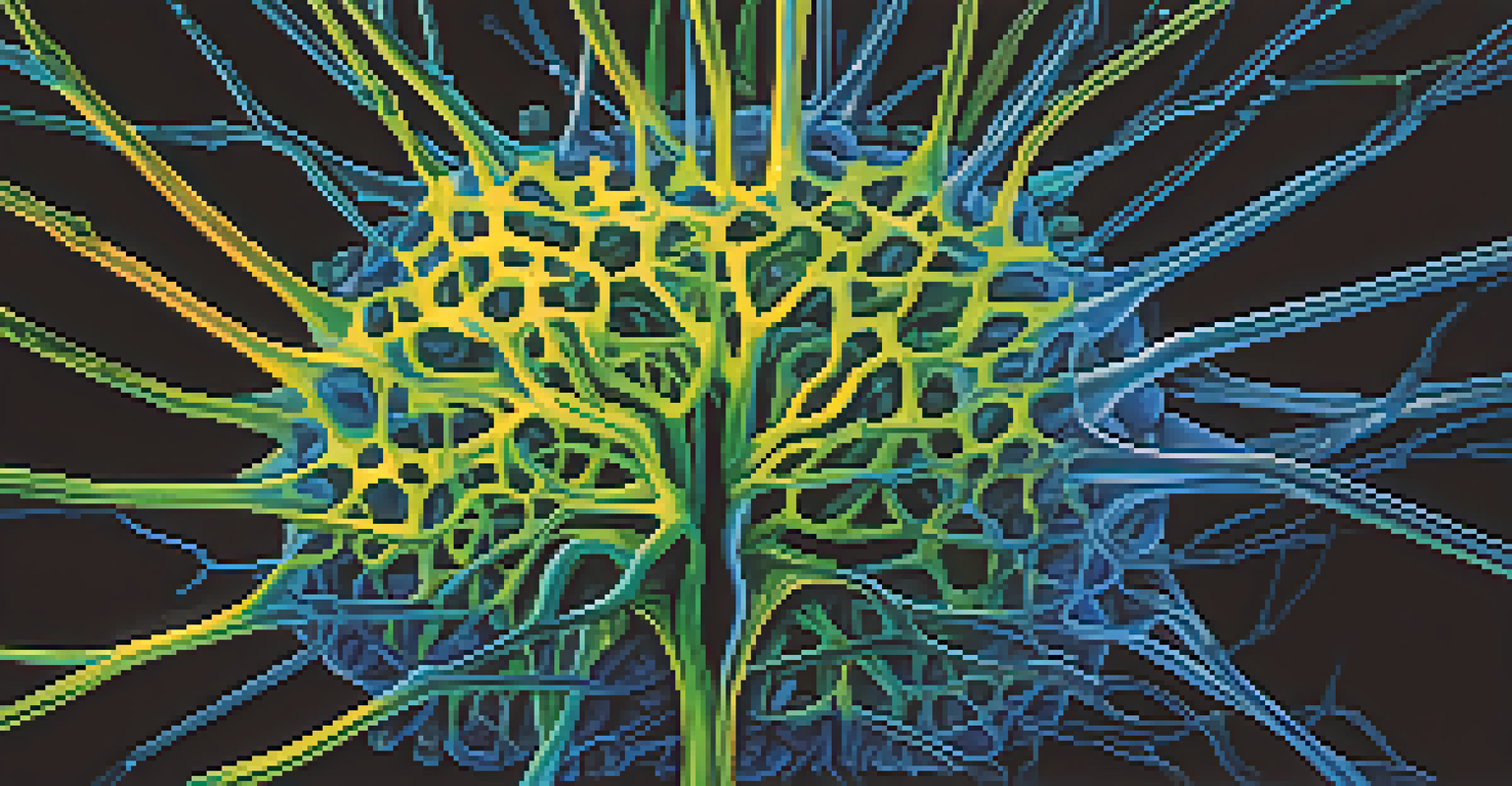Understanding the Role of Hallucinogens in Brain Plasticity

What Are Hallucinogens and Their Effects?
Hallucinogens are a class of drugs that alter perception, mood, and cognitive processes. Common examples include substances like LSD, psilocybin (magic mushrooms), and DMT. These compounds can lead to profound changes in consciousness, often described as mystical or spiritual experiences.
Hallucinogens can lead to profound insights and emotional release, helping individuals confront and process difficult emotions.
Many users report visual and auditory hallucinations, which can vary widely from person to person. The effects can last from a few hours to an entire day, depending on the substance and dosage. This alteration in perception is what piques the interest of researchers studying their impact on the brain.
Understanding how hallucinogens interact with the brain can offer insights into potential therapeutic applications, especially for mental health disorders like depression and PTSD. The exploration of these substances is not just academic; it could transform how we approach psychological healing.
Brain Plasticity: What Does It Mean?
Brain plasticity, or neuroplasticity, refers to the brain's ability to reorganize itself by forming new neural connections throughout life. This adaptability allows the brain to adjust to new experiences, learn new skills, and recover from injuries. It's a fundamental aspect of how we grow and adapt.

Neuroplasticity can be stimulated through various experiences, including learning, physical activity, and even meditation. The brain is constantly reshaping itself in response to what we encounter daily. This malleability is crucial for developing new habits or breaking old ones.
Hallucinogens Alter Perception
Hallucinogens can profoundly change consciousness, leading to visual and auditory hallucinations that vary by individual.
Understanding brain plasticity is essential for grasping how hallucinogens may influence mental health. By fostering new connections and pathways, these substances might provide a unique avenue for enhancing cognitive flexibility and emotional resilience.
The Science Behind Hallucinogens and Neuroplasticity
Research indicates that hallucinogens may promote neuroplasticity by increasing the growth of dendritic spines, which are small protrusions on neurons where synapses form. This growth can enhance communication between brain cells, potentially leading to improved mood and cognitive function. Scientists are still unraveling the mechanisms at play.
The future of hallucinogens in therapy looks promising, potentially revolutionizing how we approach mental health care.
Studies have shown that hallucinogens can stimulate the release of brain-derived neurotrophic factor (BDNF), a protein that supports neuron survival and growth. Higher levels of BDNF are associated with improved learning and memory, suggesting a direct link between hallucinogen use and enhanced cognitive abilities.
These findings pave the way for considering hallucinogens as therapeutic tools. By harnessing their potential to promote brain plasticity, researchers aim to develop innovative treatments for mental health issues that may not respond well to traditional therapies.
Hallucinogens and Their Impact on Mental Health
The therapeutic potential of hallucinogens has gained attention in recent years, particularly for conditions like depression, anxiety, and PTSD. Clinical trials have shown promising results, suggesting that these substances can lead to lasting changes in mood and perspective. For some, a single experience can result in significant improvements.
For example, psilocybin has been shown to reduce symptoms of treatment-resistant depression in some patients. The experience often leads to profound insights and emotional release, helping individuals confront and process difficult emotions. This can be a game-changer for those who have struggled for years without relief.
Neuroplasticity and Mental Health
Research suggests that hallucinogens may enhance neuroplasticity, potentially offering new therapeutic avenues for mental health disorders.
While promising, it’s important to approach this research with caution. The context of use, such as therapeutic settings and support systems, plays a crucial role in the outcomes. Ensuring safety and efficacy is paramount as we explore these groundbreaking treatments.
Challenges and Risks of Hallucinogen Use
Despite their potential benefits, using hallucinogens is not without risks. Not everyone responds positively to these substances; some may experience anxiety, paranoia, or disturbing hallucinations. Understanding individual differences is critical for safe usage.
Moreover, the legality of hallucinogens varies widely, and in many places, they remain classified as illegal substances. This legal status can hinder research efforts and limit access for those who might benefit from their use. Addressing these barriers is essential for advancing our understanding.
It's also worth noting that hallucinogens should not be seen as a one-size-fits-all solution. They are not a substitute for professional mental health care but rather a complementary approach that might enhance traditional therapies when used responsibly.
The Future of Hallucinogens in Therapy
As research continues to unfold, the future of hallucinogens in therapy looks promising. Increasingly, mental health professionals are considering these substances as adjuncts to conventional treatment methods. This shift could revolutionize how we approach mental health care.
Innovative studies are exploring how microdosing—taking small, sub-hallucinogenic doses—might yield benefits without the intense experiences associated with full doses. Early reports suggest that microdosing could enhance creativity, focus, and emotional well-being, though more rigorous research is needed.
Therapeutic Use and Caution
While hallucinogens show promise for treating conditions like depression and PTSD, their use must be approached with caution due to individual variability and legal issues.
As societal attitudes towards these substances evolve, we may see a greater acceptance of their therapeutic potential. The integration of hallucinogens into mainstream mental health practices could offer new hope for those seeking relief from psychological distress.
Personal Experiences: Anecdotes from Users
Many individuals have shared transformative experiences related to hallucinogen use. One common theme is the sense of interconnectedness and heightened awareness that can occur during a trip. Users often describe feeling a deep connection to themselves and the world around them, leading to lasting changes in perspective.
For instance, someone might report overcoming long-held fears or gaining clarity on life choices through their experiences. These personal stories underscore the potential of hallucinogens to inspire introspection and emotional healing, making them a fascinating area of exploration.

While personal anecdotes should be taken with caution—since they’re subjective—they can provide valuable insights into how hallucinogens might influence mental health. They remind us that each person's journey is unique, and further research is needed to understand the underlying mechanisms.